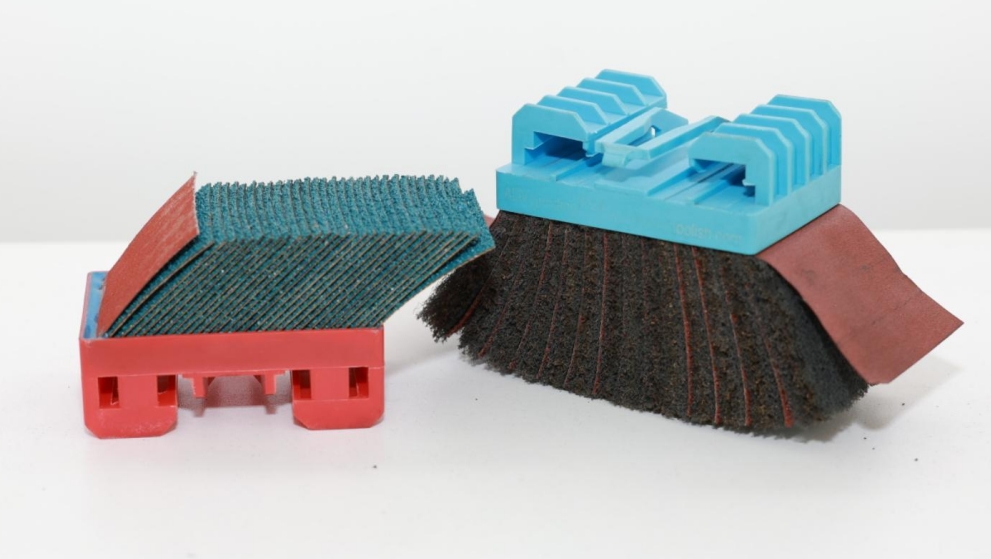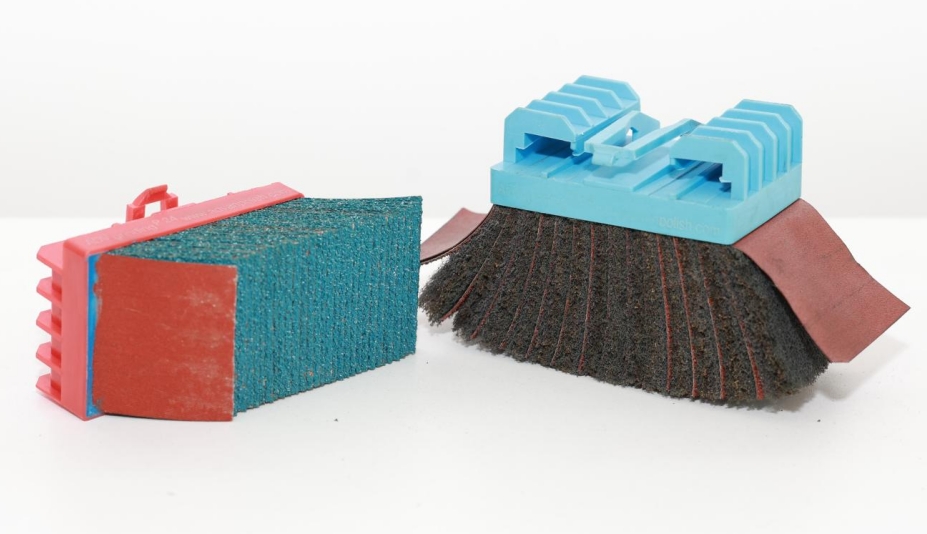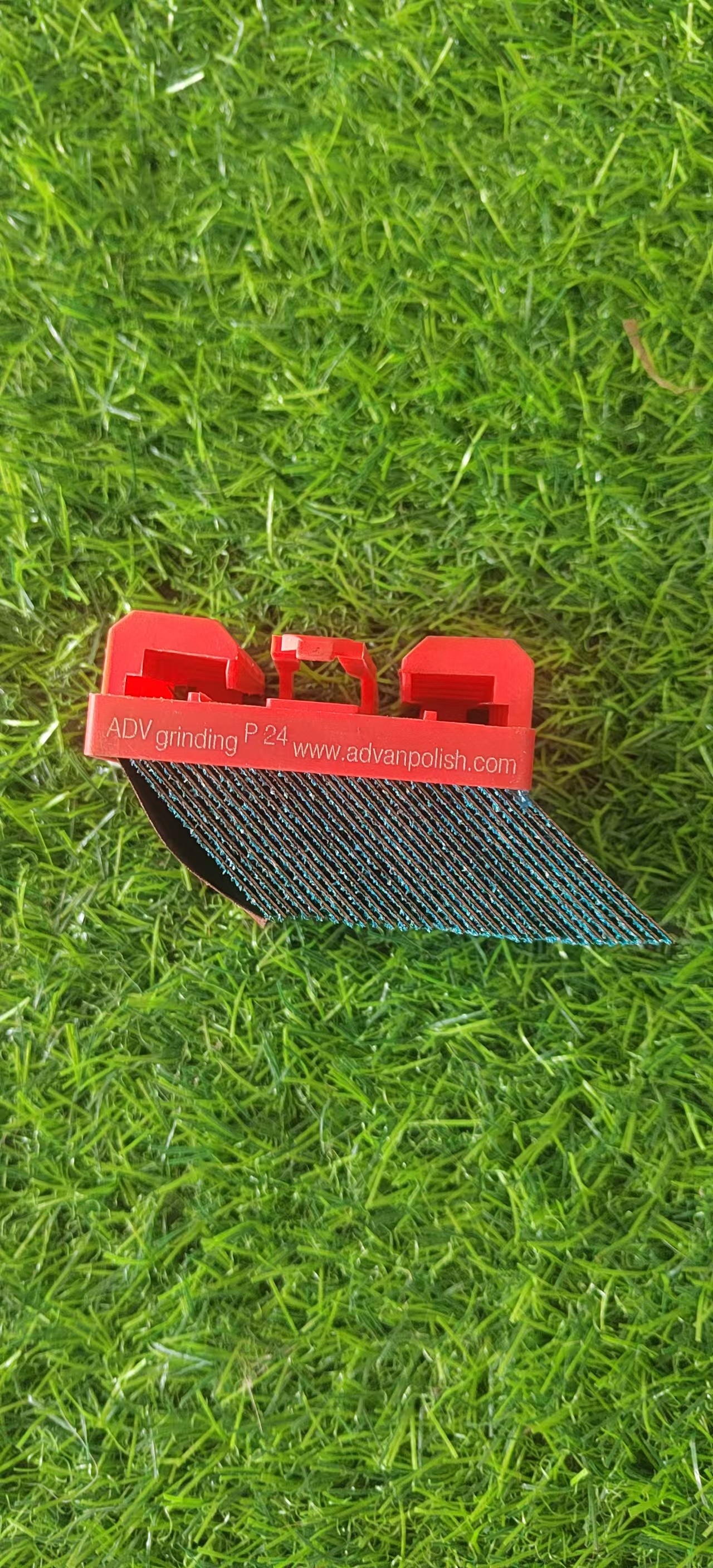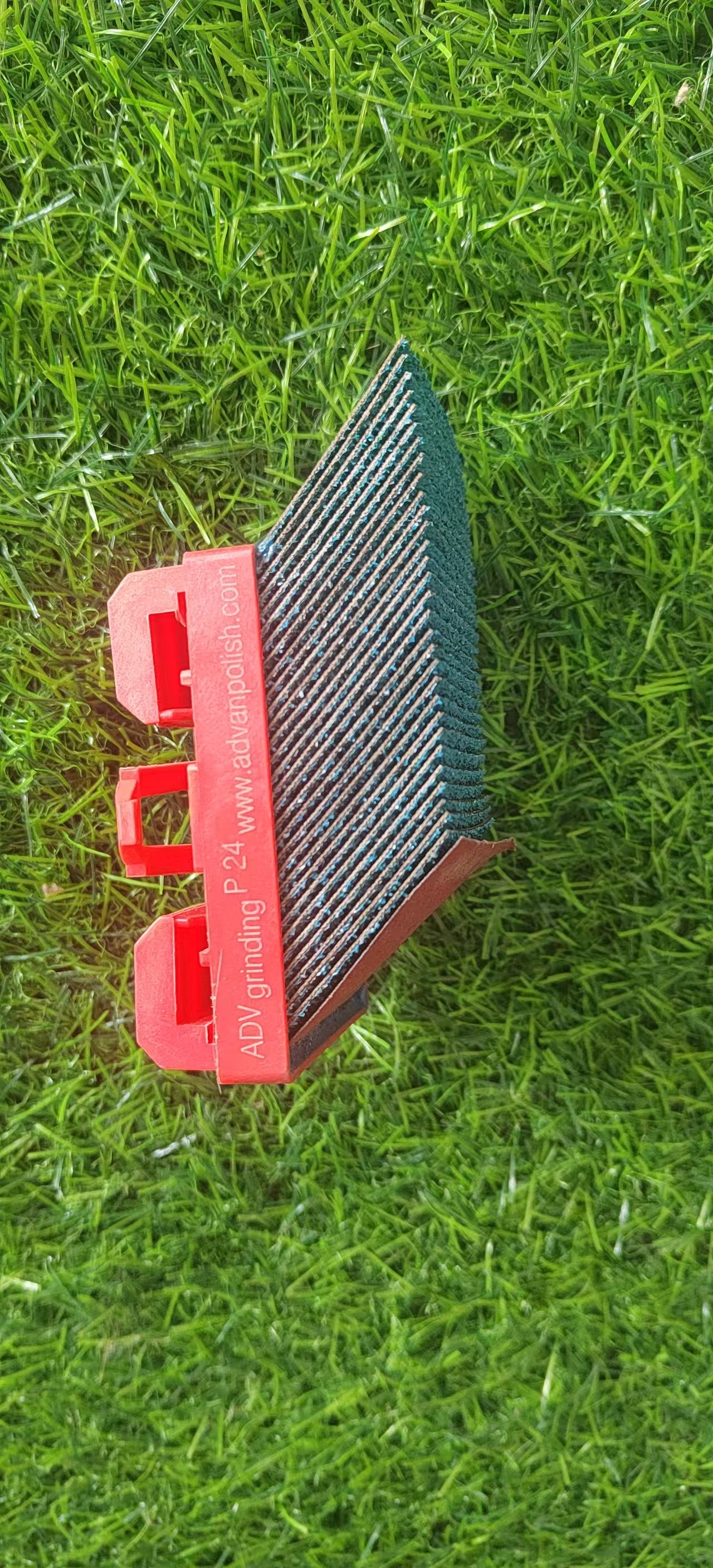Deburr and edge round sheet metal as efficiently as possible
Deburring Blocks specifications are complete,→ Contact Us to get the sand block size for free .
Industrial abrasive wire disc brushes for deburring and edge rounding
Does not change the appearance of the workpiece, effectively prevents


The shape of abrasive materials significantly impacts their performance in material removal and surface treatment processes. In grinding and deburring applications, the geometry of abrasive flaps plays a crucial role in determining tool effectiveness. Narrow abrasive flaps demonstrate superior grip on inner contours of sheet metal components, while wider flaps achieve higher material removal rates on long straight edges. The final characteristics of a sanding tool are defined by both the thickness configuration and structural slitting patterns of its abrasive flaps. Additionally, the angle at which abrasive particles contact workpiece edges further influences removal efficiency.


For metal grinding and polishing operations, specialized brushes are designed with distinct structural features. The left brush in the comparison employs a block-shaped configuration with layered abrasive materials, optimized for aggressive material removal. In contrast, the right brush adopts a conventional broom-style design with flexible bristles, suitable for finer surface finishing. Both variants feature durable plastic bases with standardized mounting interfaces, enabling compatibility with industrial equipment. These tools are widely implemented across automotive, manufacturing, and metalworking sectors for critical processes including surface preparation, burr removal, and achieving uniform surface finishes. The design variations allow operators to select optimal tools based on specific requirements for material hardness, edge geometry, and desired surface quality.
scratches
Cleaning coating
Polishing and rust removal
Removing burrs
Surface polishing
Rounded corner grinding
Surface brushing
Special accessories for deburring machines
Grinding cloth



























